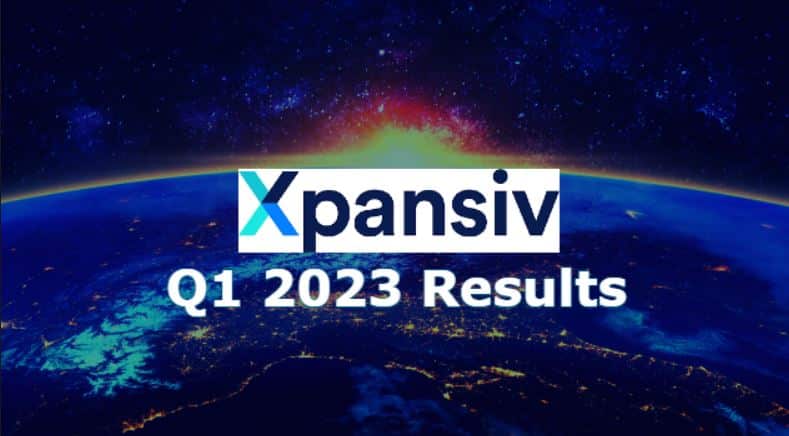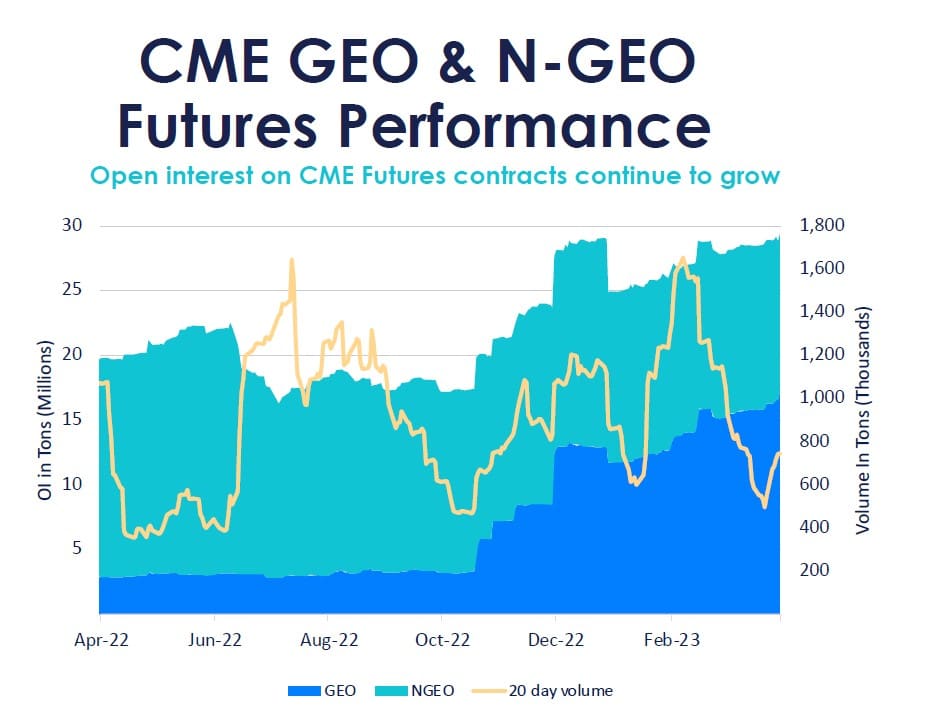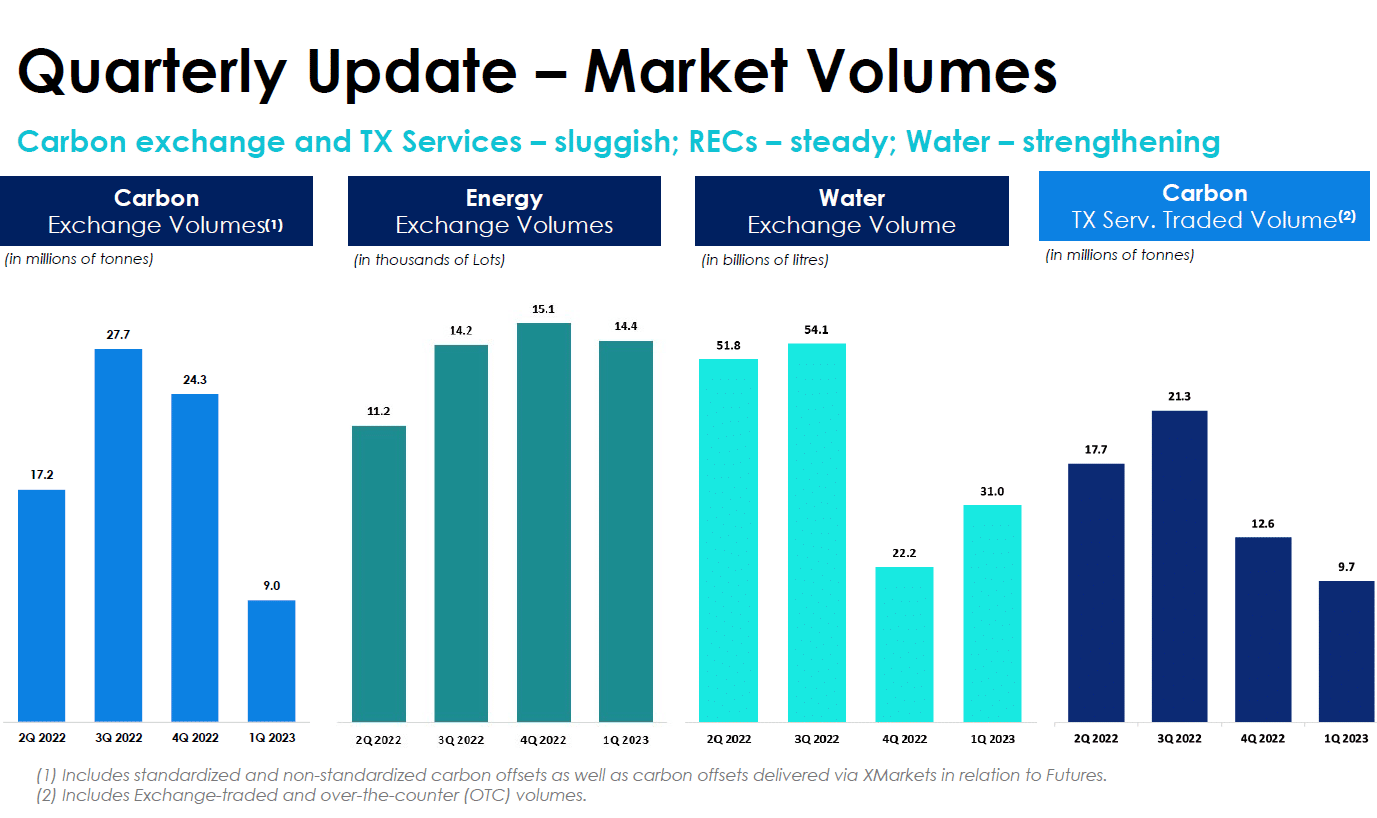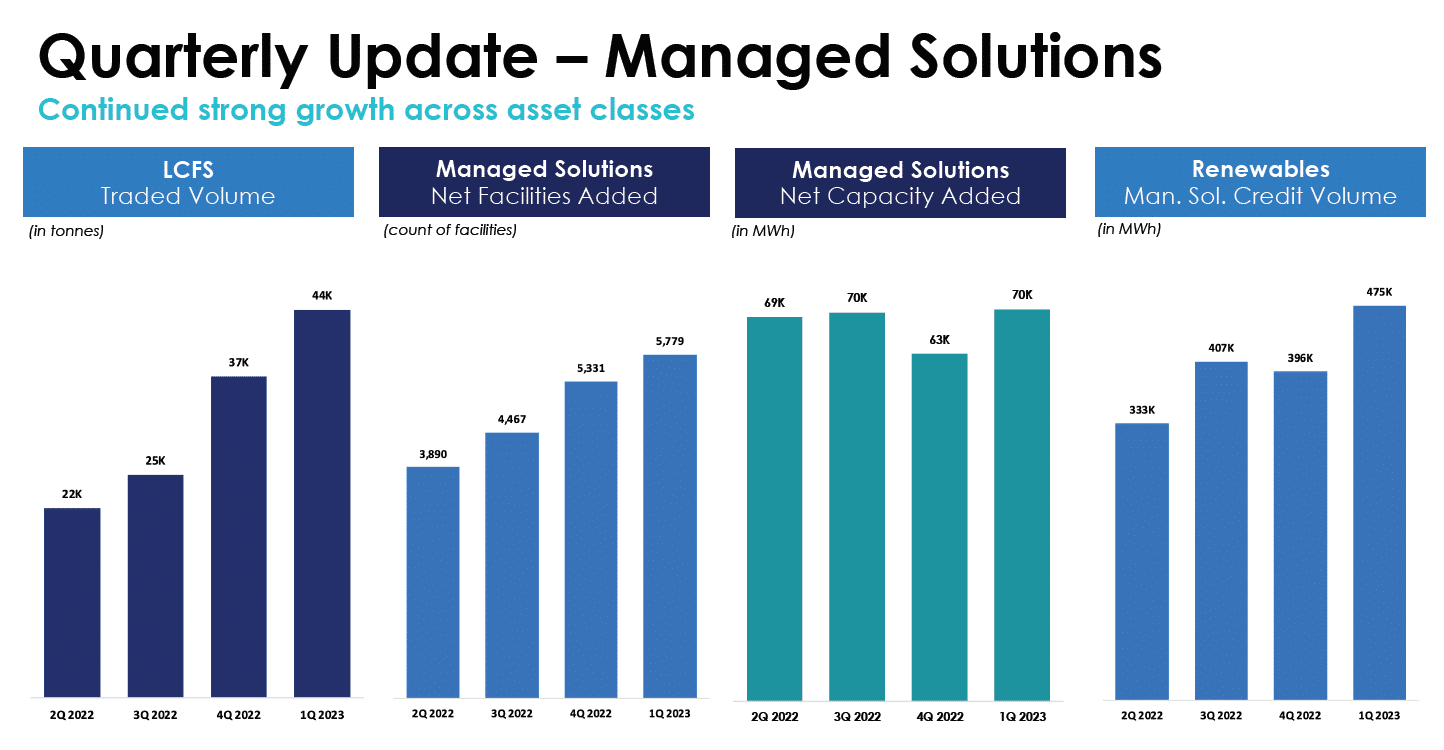For the first quarter of 2023, Xpansiv achieved significant results, particularly on its carbon market performance. Here are the key achievements.
First up, the dominant carbon credit exchange managed to maintain a staggering share of the global voluntary carbon market (VCM) above 85%.
Plus, over 50% of carbon volumes were traded on its suite of CBL Global Emissions Offset or GEO standardized contracts.
As seen below, Xpansiv’s CME Futures contracts performance keeps on growing, both for its GEO and N-GEO contracts.
The exchange also demonstrated the diversity of its product portfolio, including REC (renewable energy credit), fuel, and water market transactions.
Overall, among its diverse market volumes, carbon credit exchange (9 million tonnes) and TX services (9.7 million tonnes, including exchange-traded and over-the-counter volumes) are slow while RECs remain steady.
When it comes to power and registry results for the first three months, a slight drop in carbon credit issuances (almost 57 million tonnes) was compensated by the growth in REC offsets (72 million MWh) issued as shown by the chart.
Another milestone that Xpansiv reached is the formation of a spin-out of its tech platform called XHub. It comprises digital monitoring, reporting, and verification capabilities of the leading exchange.
This move led to the creation of Xpansiv’s new subsidiary, Fiutur Information Exchange Inc. The exchange will hold an equity interest in this new company.
The company had also launched multiple carbon credit products across the globe. These include ACCUs in Australia, International REC (I-RECs) products, and CBL-enabled trading of EcoRegistry offsets.
Lastly, Xpansiv launched the first exchange-traded California Low Carbon Fuel Standard spot contract, further expanding the company’s already expansive network.





